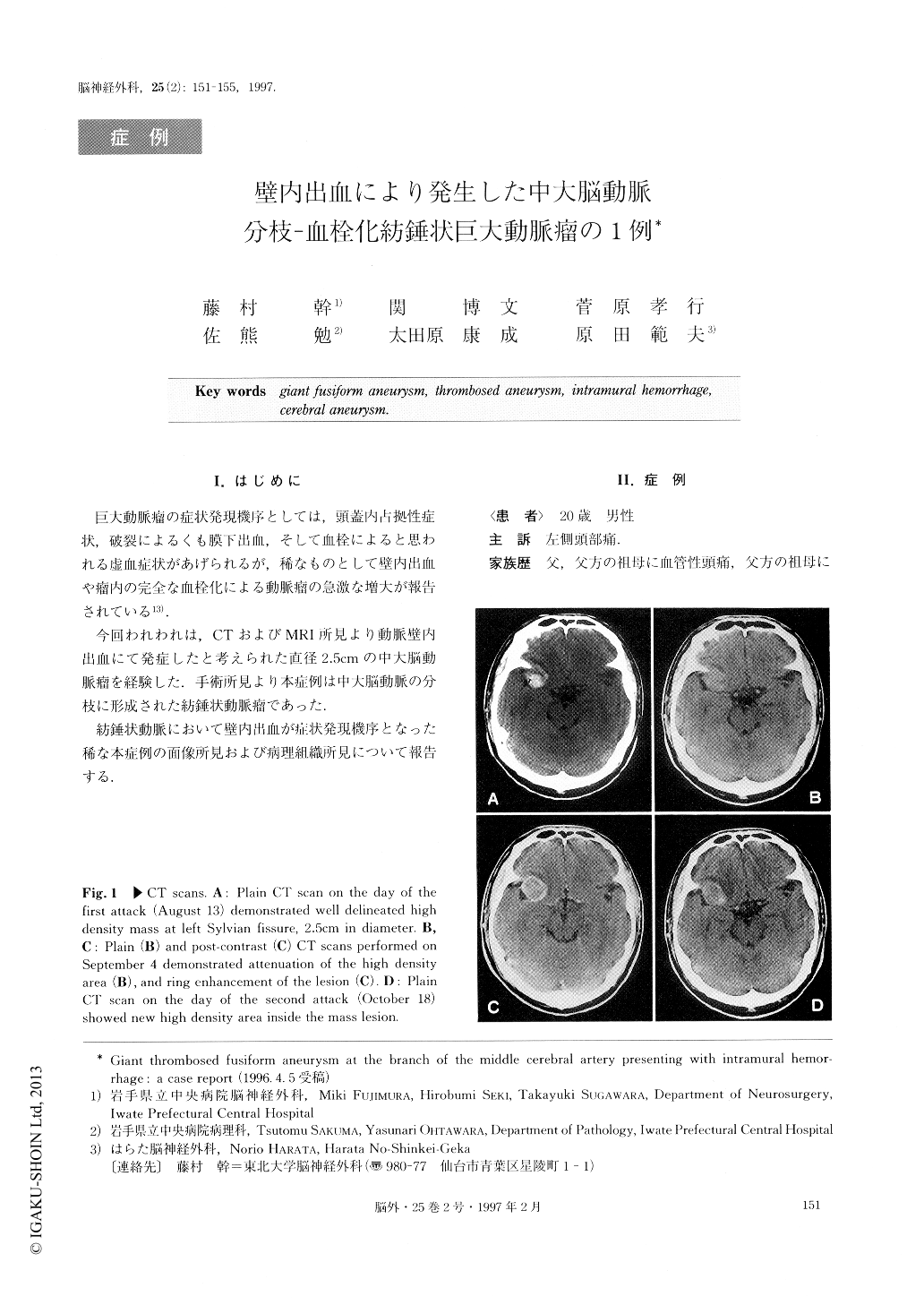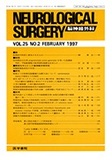Japanese
English
- 有料閲覧
- Abstract 文献概要
- 1ページ目 Look Inside
I.はじめに
巨大動脈瘤の症状発現機序としては,頭蓋内占拠性症状,破裂によるくも膜下出血,そして血栓によると思われる虚血症状があげられるが,稀なものとして壁内出血や瘤内の完全な血栓化による動脈瘤の急激な増大が報告されている13).
今回われわれは,CTおよびMRI所見より動脈壁内出血にて発症したと考えられた直径2.5cmの中大脳動脈瘤を経験した.手術所見より本症例は中大脳動脈の分枝に形成された紡錘状動脈瘤であった.
We report a rare case of a giant thrombosed fusiform aneurysm at the branch of left middle cerebral artery presenting with intramural hemorrhage of the aneu-rysm.
A twenty-year-old man with familial and past history of migraine presented sudden temporalgia on August 13, 1995. Computed tomography (CT) scan on the day of the first attack revealed a well delineated high densi-ty area at the left Sylvian fissure, 2.5cm in diameter. Angiogram showed avascular area corresponding to the lesion, but no visualization of the aneurysm. On Octo-ber 18, this patient presented sudden temporalgia again.CT scan on the day of the second attack indicated new intramural hemorrhage and surgery was performed on October 31. No evidence of subarachnoid hemorrhage was shown during the operation, and the lesion was proven to be a thrombosed fusiform aneurysm at the branch of the middle cerebral artery. The parent artery was clipped at both proximal and distal sides of the aneurysm, and the aneurysm was totally removed with success. Histological finding further supported the idea that the attacks mentioned were due to intramural hemorrhage of the thrombosed aneurysm. Postopera-tive course was uneventful and the patient was dis-charged without any neurological deficit.
Intramural hemorrhage of a giant fusiform aneurysm is relatively rare, only reported in several autopsy cases. Furthermore, we failed to discover any compara-ble cases of giant fusiform aneurysm presenting symp-toms directly caused by intramural hemorrhage of the aneurysm.

Copyright © 1997, Igaku-Shoin Ltd. All rights reserved.


